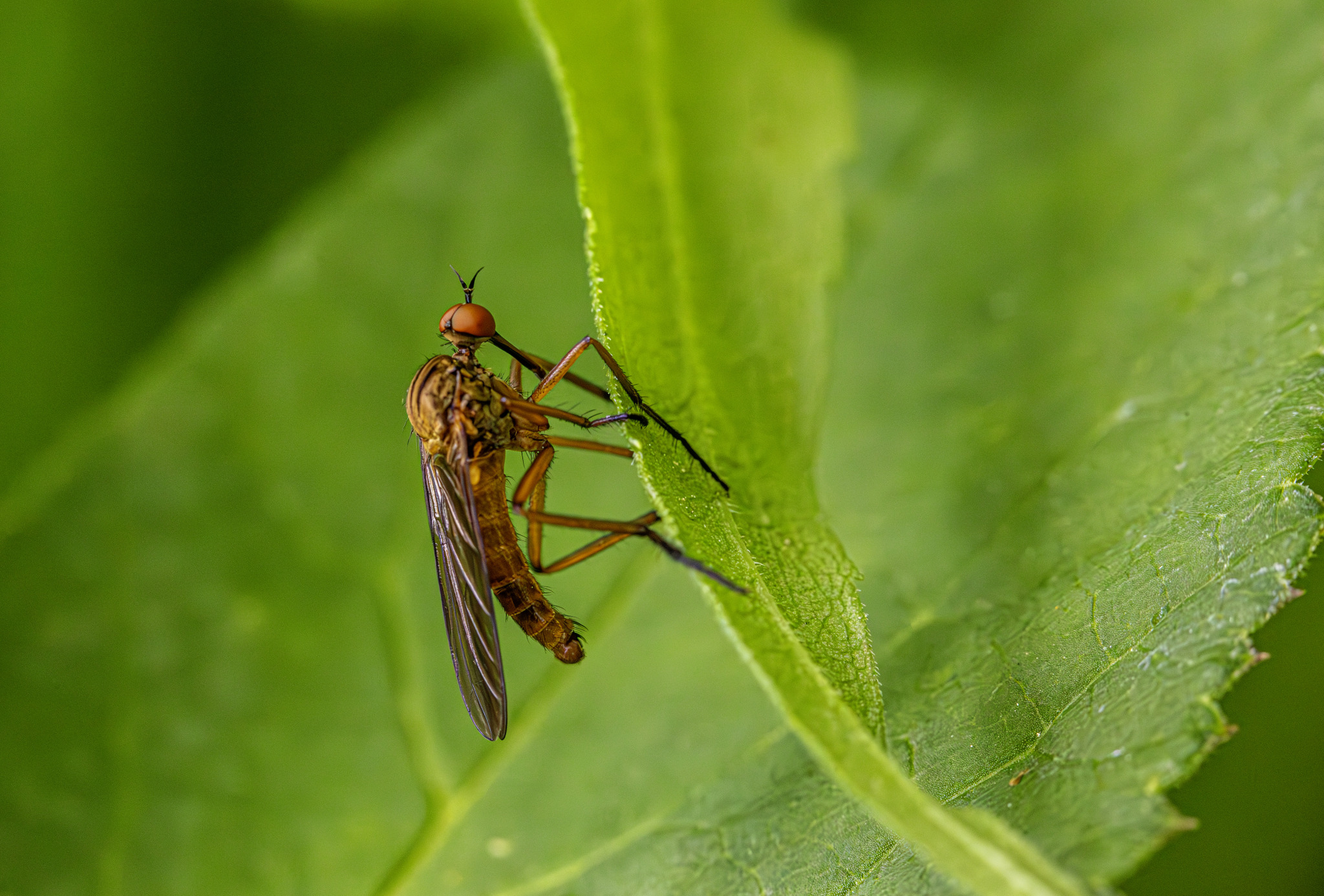The Dance Fly (Empis livida) is a species of fly belonging to the family Empididae, which is known for the characteristic “dancing” mating behavior of the males. These flies are commonly found in a variety of habitats and are interesting due to their unique courtship rituals and ecological roles. Here are some detailed characteristics and information about the Dance Fly:
Appearance
- Size: Adult Dance Flies are relatively small, typically measuring about 6 to 9 millimeters in length.
- Coloration: They have a generally dark or blackish body with a metallic sheen. The abdomen can sometimes appear reddish or brown.
- Wings: The wings are clear and relatively long, often held at an angle when at rest.
- Legs: They have long, slender legs which are often used in their distinctive mating displays.
- Antennae: Their antennae are short and bristle-like, typical of many flies.
Habitat
- Preferred Habitats: Dance Flies are versatile and can be found in a variety of habitats, including meadows, forests, gardens, and near bodies of water. They prefer areas with abundant vegetation.
- Geographic Range: Empis livida is widely distributed across Europe and parts of Asia. They are commonly found in temperate regions.
Behavior
- Feeding: Adult Dance Flies are predatory and feed on other small insects. They use their piercing mouthparts to capture and consume prey. They are also known to feed on nectar.
- Mating Rituals: The most notable behavior of Dance Flies is their complex courtship ritual. Males perform aerial dances to attract females and often present a “nuptial gift” in the form of a captured insect wrapped in silk. This behavior not only attracts females but also distracts them, reducing the risk of predation during mating.
- Activity: They are typically most active during the day and are often seen flying in swarms, particularly during the mating season.
Life Cycle
- Eggs: Females lay their eggs in moist soil or decaying organic matter.
- Larvae: The larvae are also predatory and feed on small invertebrates in the soil or leaf litter.
- Pupation: The larvae pupate in the soil, and adult flies emerge after completing their development.
Ecological Role
- Predatory Impact: Dance Flies play a significant role as predators of other small insects, helping to control pest populations.
- Pollination: By feeding on nectar, they also contribute to the pollination of various plants, although they are less efficient pollinators compared to bees and butterflies.
Identification Tips
- Body Shape and Color: The slender, dark body with a metallic sheen and long legs are key identifying features. Observing their behavior, particularly the mating dance, can also aid in identification.
- Habitat and Behavior: Watching for their distinctive swarming behavior and nuptial gift presentation can help confirm their identity.
Conservation Status
- Population: Empis livida is not considered endangered and is common across its range. Their populations are stable, benefiting from a wide range of suitable habitats.
- Threats: While they are not significantly threatened, habitat destruction and pesticide use can impact their populations by reducing prey availability and suitable environments for breeding.
Interesting Facts
- Nuptial Gifts: The nuptial gift behavior is a fascinating example of sexual selection, where females choose mates based on the quality of the gift presented.
- Aerial Acrobatics: The aerial dances performed by males are not only for attracting females but also demonstrate their agility and fitness, important traits for survival and reproduction.
In summary, the Dance Fly (Empis livida) is a small, predatory fly known for its distinctive mating behavior involving aerial dances and nuptial gifts. Found across Europe and parts of Asia, these flies play an important ecological role as predators and occasional pollinators. Their unique courtship rituals make them a fascinating subject of study in the field of entomology.
Views: 538
Subscribe to the newsletter:
